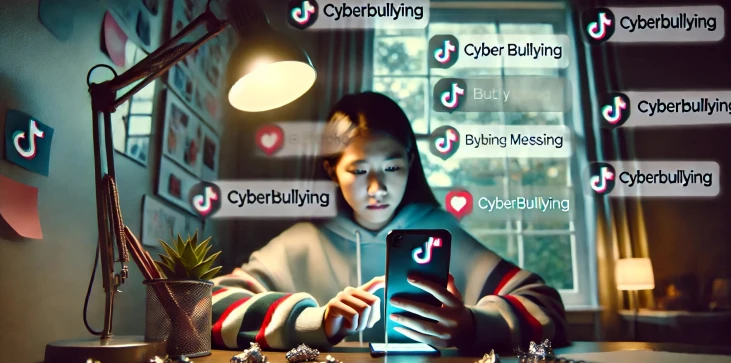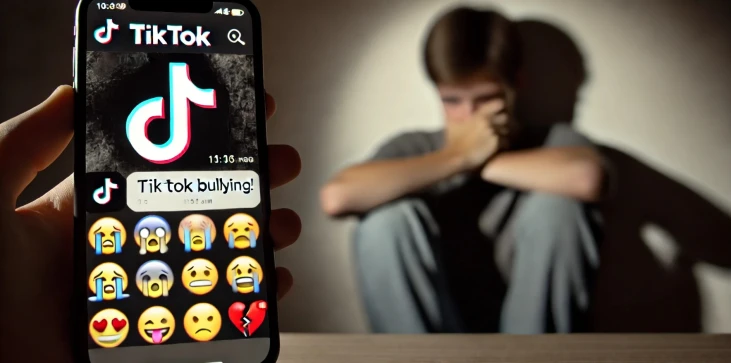
As TikTok’s user base surpasses 1 billion, the platform has become a social hub for entertainment, creativity, and connection. However, alongside its popularity comes a darker side—TikTok bullying. This phenomenon refers to the aggressive, harmful behavior targeted at users through comments, videos, or direct messages, often leaving victims emotionally distressed or worse. The ease of anonymity and the viral nature of TikTok make it a breeding ground for cyberbullying, especially among younger users. Understanding what TikTok bullying entails and its potential impact is key to protecting users and fostering a safer online environment. From spreading hurtful rumors to making degrading comments on appearance or lifestyle, TikTok bullying can take many forms. Victims often suffer in silence, feeling powerless as the negative content spreads rapidly across the platform. In some cases, the effects go beyond the digital realm, affecting mental health and overall well-being. In this article, we’ll discuss the different facets of TikTok bullying, how to identify it, and actionable steps users and platform administrators can take to mitigate its effects.
TikTok bullying refers to the intentional harm or harassment directed at users through negative interactions on the platform. This can include hateful comments, shaming videos, or even orchestrated campaigns to mock or defame someone. The most common types of bullying seen on TikTok involve body shaming, trolling, or spreading misinformation about a particular individual. Unlike traditional bullying, the viral nature of TikTok content means these incidents can quickly spiral out of control, reaching large audiences and causing widespread damage.
The consequences of TikTok bullying are far-reaching, particularly when it comes to the mental health of its victims. Adolescents and teens are especially vulnerable, as they may internalize the criticism, leading to feelings of anxiety, depression, or even suicidal thoughts. Studies show that prolonged exposure to online harassment can have serious effects on self-esteem and emotional well-being, causing long-term psychological scars. Recognizing these dangers is essential for both users and guardians to intervene and offer the necessary support.
Recognizing the signs of TikTok bullying early on is critical in stopping its spread. Red flags include a sudden increase in negative comments, anonymous accounts targeting specific users, or coordinated efforts to post harmful content. TikTok offers tools like comment filtering and blocking, which can be effective in stopping bullies from interacting with the victim. Additionally, reporting abusive content is a necessary step to ensure the platform addresses these issues promptly. However, taking legal action or involving school authorities may also be required in severe cases.
Preventing TikTok bullying requires a collective effort from users, parents, and platform administrators. TikTok itself has implemented safety features such as restricted modes, comment moderation, and digital well-being settings to help users control their experience. Additionally, education plays a vital role—parents should have open conversations with their children about online behavior, cyberbullying, and the importance of empathy in digital interactions. Schools can also contribute by incorporating digital citizenship into their curriculums, teaching students how to navigate social media responsibly.
TikTok bullying is a serious issue that requires immediate attention from both the platform and its users. As online interactions become more frequent, it’s crucial to foster an environment of respect and kindness. While TikTok has implemented safety measures, it is equally important for users to educate themselves on how to protect their mental well-being and respond appropriately to cyberbullying. By taking preventive steps and offering support to victims, we can reduce the prevalence of bullying on TikTok and make it a safer space for everyone.

Beyond visible comments or messages, victims may show signs of withdrawal from the platform, reluctance to engage in online activities, or even changes in mood such as increased anxiety or sadness. Some might become overly preoccupied with their content's performance, obsessing over negative interactions while ignoring positive feedback.
TikTok’s unique format, where short, viral videos can reach large audiences quickly, makes bullying more public and potentially more harmful than on other platforms. Additionally, the platform's trend-driven culture can amplify bullying incidents when negative content gets shared widely or picked up by others in challenges or remixes.
Victims or their guardians can report bullying to the platform, but if the situation escalates, they may need to seek legal recourse. This can involve documenting incidents of bullying, collecting evidence, and filing a complaint under laws against harassment, defamation, or, in some jurisdictions, cyberbullying legislation. Engaging with law enforcement or seeking a restraining order are additional steps that can be taken depending on the severity of the bullying.